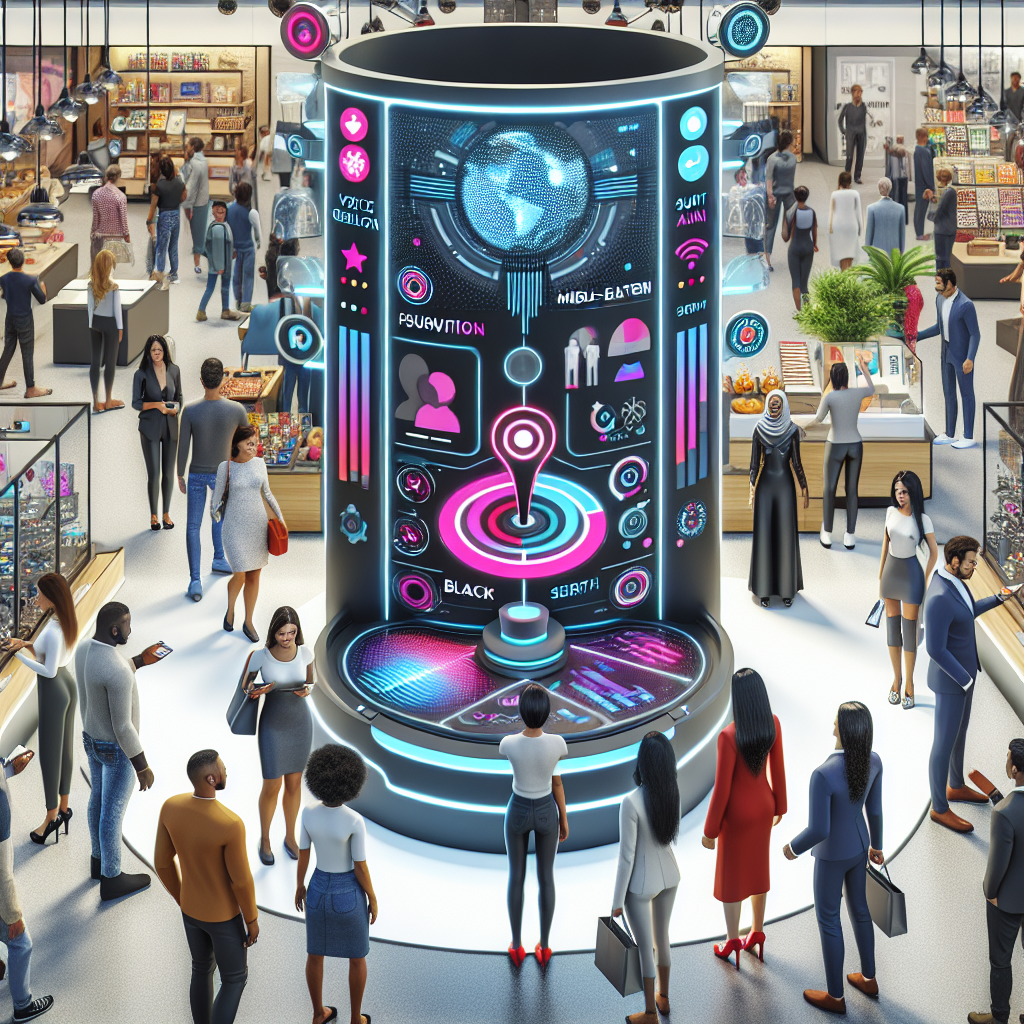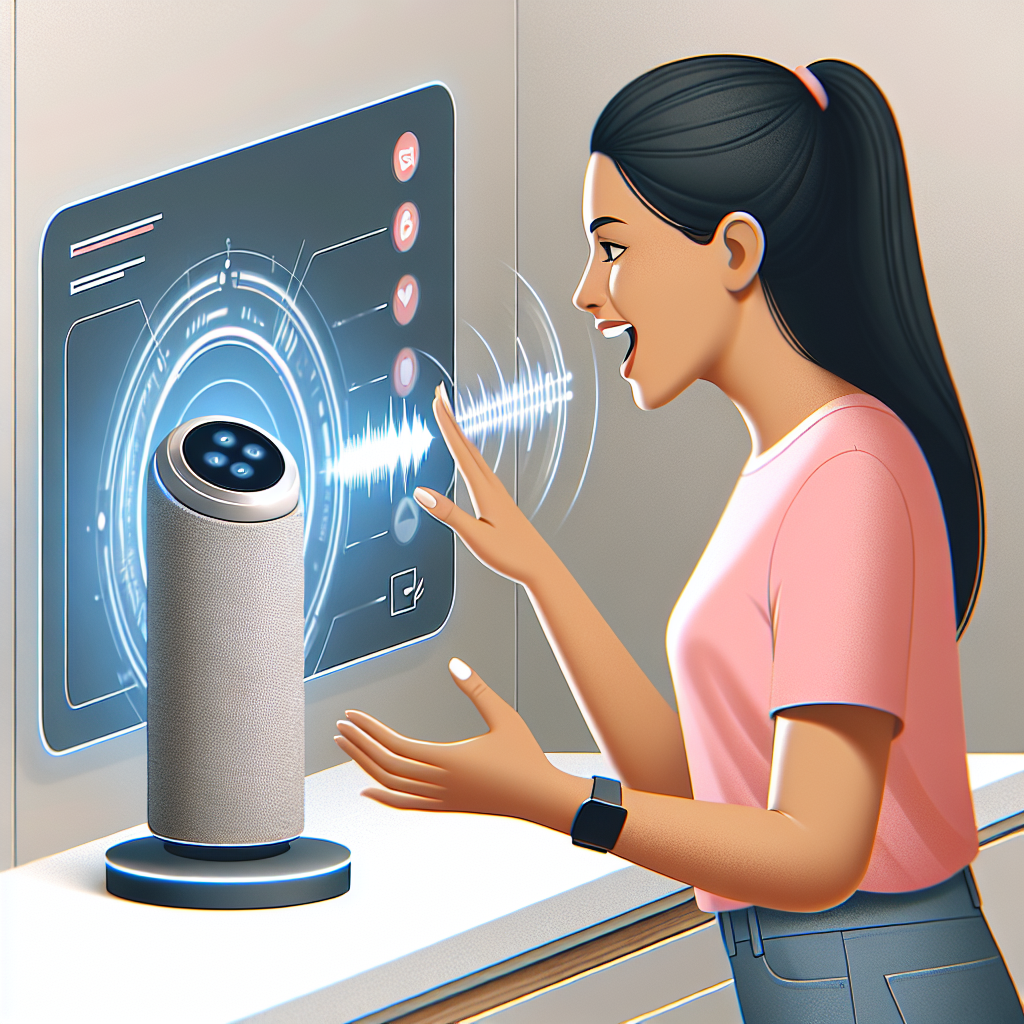
In the modern, fast-paced world of business, there is an ever-growing need for efficient ways to collect customer feedback. One revolutionary tool that has gained significant momentum in recent times is voice-activated feedback. Through the power of 'AI voice technology', brands are now able to interact more conveniently with their customers, thereby improving engagement.

The fundamental principle of this technology is simple yet impressive: the customer speaks their feedback into a device – such as Google Home, Amazon Echo, smartphones or even smartwatches – and the device transcribes the spoken words into text data. This mode of data collection is arguably more seamless and efficient than traditional typing.
One primary advantage of voice-activated feedback is that it increases survey completion rates. With people generally growing weary of typing out lengthy responses, the ease of simply voicing their opinions is a welcome change. The ease of use and convenience encourages customers to complete surveys, thus leading to richer data collection and more accurate insights into customer behaviour and satisfaction.
In conclusion, the application of voice-activated technology in gathering customer feedback is an emerging trend to watch out for. Its potential to boost survey completion rates and offer valuable insights is an unprecedented opportunity for brands seeking to enhance their customer-centric strategies.
As businesses continuously seek ways to understand their customers better, they are increasingly recognizing the benefits of utilizing Voice-Activated Surveys for customer feedback collection. This method, which leverages advanced technology, offers distinct advantages over traditional survey methods and can significantly enhance survey completion rates.
One of the key benefits is accessibility. Voice-activated surveys remove the barrier of literacy or visual impairment, making them accessible to a wider audience. Users can interact via voice commands rather than text, making the whole process inclusive. (source)
Another advantage is the user-friendliness of these surveys. Using just their voice, customers can easily navigate through questions, making the feedback process remarkably simple and straightforward. This natural form of communication is appreciated by users, who often find form-filling methods cumbersome and time-consuming. (source)
Perhaps the most significant benefit of voice-activated surveys is the significantly higher engagement rates. The interactive and conversational nature of voice-activated surveys increases engagement, which in turn, leads to a higher completion rate. The verbal interaction fosters a connection, which makes the users feel like they are part of a conversation, hence encouraging comprehensive, thoughtful responses. (source)
In summary, businesses seeking to improve their understanding of customer perceptions, needs, and behaviors should consider the merits of Voice-Activated Surveys. Their accessibility, user-friendliness, and potential to drive significantly higher engagement and completion rates make them an effective tool in customer feedback collection.
Voice-Activated Customer Feedback Collection is emerging as a powerful tool for enhancing survey completion rates. Traditionally, customers are asked to fill out lengthy online or paper-based forms, a method that often yields low response rates due to its time-consuming nature. Integrating voice-activated technology, however, can revolutionize the way businesses glean customer insights. Such integration with existing CRM and data analytics tools provides an efficient, holistic solution to the long-standing challenge of survey attrition.

Notably, the compatibility of voice-activated feedback systems with prevalent digital ecosystems such as CRMs (Customer Relationship Management) and various data analytics tools empowers businesses with seamless technological integration. By syncing customer feedback directly with CRM databases or analytics platforms, organizations can streamline data reception, eliminate the need for manual data entry, and expedite the process of insights extraction.
This, in turn, enables businesses to obtain real-time customer feedback, improving their responsive capability and decision-making processes. For instance, if a customer expresses dissatisfaction via voice feedback, it can be immediately registered in the CRM. This instantaneous update allows businesses to swiftly address customer concerns, leading to an enhanced overall customer service experience.
More importantly, the integration of voice-activated customer feedback with analytics platforms provides opportunities for businesses to leverage AI-driven data analysis and interpretation. This can provide more in-depth insights into consumer behavior, preferences, and satisfaction levels, leading to more data-driven strategies and improved customer experience. Such integration promotes an efficient feedback loop and opens new avenues for customer relationship management and data-driven marketing.
In the ever-evolving world of customer service, voice-activated feedback collection has emerged as a gamechanger. Integrated with advanced natural language processing (NLP) technology, these automated platforms are hard-wired to record, transcribe, and interpret consumer responses in real-time. By adopting these novel technology applications, businesses not only achieve enhanced survey completion rates but also secure a veritable trove of instantaneous data points infused with consumer sentiment.
The real-time data processing capability of voice-activated systems enables businesses to understand the pulse of their customer base instantaneously. And this, in turn, allows for immediate action. Whether it is adressing an issue flagged during a customer survey or rolling out a marketing campaign based on recent feedback, businesses have the agility to be proactive, rather than just reactive, enhancing overall consumer satisfaction.
Additionally, voice-activated feedback systems streamline the data collection process, reducing consumer strain and, consequently, improving survey participation rates. Several studies, such as the one conducted by CMSWire, noted a significant decrease in attrition rates amongst respondents using voice-assisted feedback collection.
In conclusion, the marriage of voice-activated feedback collection with real-time data processing can grant businesses the competitive edge they need to excel in fast-paced markets. It empowers organizations to listen to their customers, respond proactively, and stay ahead in the consumer satisfaction game.
As businesses continue to seek innovative ways to engage customers and gather valuable feedback, the adoption of voice-activated customer feedback collection has been a game-changer for several early adopters. Here, we shall examine case studies featuring companies that have implemented this technology to enhance survey completion rates and improve customer engagement.

Domino's Pizza was one of the first establishments to tap into voice technology to gather customer feedback. Utilizing Alexa’s skills, Domino’s managed to integrate a system where customers could easily provide feedback on their ordered meals using their voice. The decision saw an increase of 30% in customer feedback submission rates, largely due to the ease and speed of providing voice feedback compared to traditional methods.
Global hotel chain Marriott also successfully implemented a voice-activated feedback system in their hospitality service. Using Google Home and Amazon Echo in their hotel rooms, guests can provide feedback regarding their experience or lodge complaints in real-time. This innovative approach contributed to a significant increase in feedback collection rates by 25%, due to the convenience it offers to guests.
Lastly, Tesla's innovative use of voice control in their vehicle interfaces has also been instrumental in accumulating customer feedback. With commands like "bug report" or "note," drivers can immediately express their feedback while maintaining their attention on the road. Consequently, Tesla saw a noticeable boost in feedback rates and valuable insight collection.
In conclusion, the implementation of voice-activated feedback systems has proven beneficial in improving survey completion rates. By providing a convenient and seamless feedback experience, businesses promote customer engagement and subsequently collect valuable consumer insights.
With the rise of voice-activated technology like Amazon's Alexa, Google's Assistant, and Apple's Siri, businesses are witnessing a new age of data collection strategies. Modern consumers not only demand personalized interactions but also appreciate ease of engagement. Voice-activated feedback collection positions itself as a technological development that can bridge this gap effectively.
AI-powered voice surveys are anticipated to reshape the future of customer insights. The accelerating movement towards voice-controlled interfaces implies the need to adapt and innovate data collection tactics. The inherent naturalness and convenience in interacting with voice-activated systems can significantly enhance survey completion rates, improving businesses’ understanding of their clientele.
As advancements in speech recognition and natural language processing continue to progress, voice-activated feedback is likely to become more accurate and refined. Future trends suggest that these systems could be capable of understanding complex commands or prompts, making interaction with customers more intuitive and engaging.
In the not-so-distant future, businesses might even deploy these systems in-store. Shoppers could then provide their responses in real-time, ensuring instant feedback that is more relevant and precise. As a result, the feedback collection process would be greatly enriched, and businesses would be able to act promptly on given insights, enhancing user experience and customer satisfaction.
Notwithstanding, while embracing the future of voice-activated feedback, one should not disregard concerns regarding data security and privacy. It is vital for businesses to be transparent about how they will use and protect customer's data. These aspects need to be factored into the design and execution of voice-activated feedback collection strategies to maintain consumer trust.
Start your free trial for My AI Front Desk today, it takes minutes to setup!








